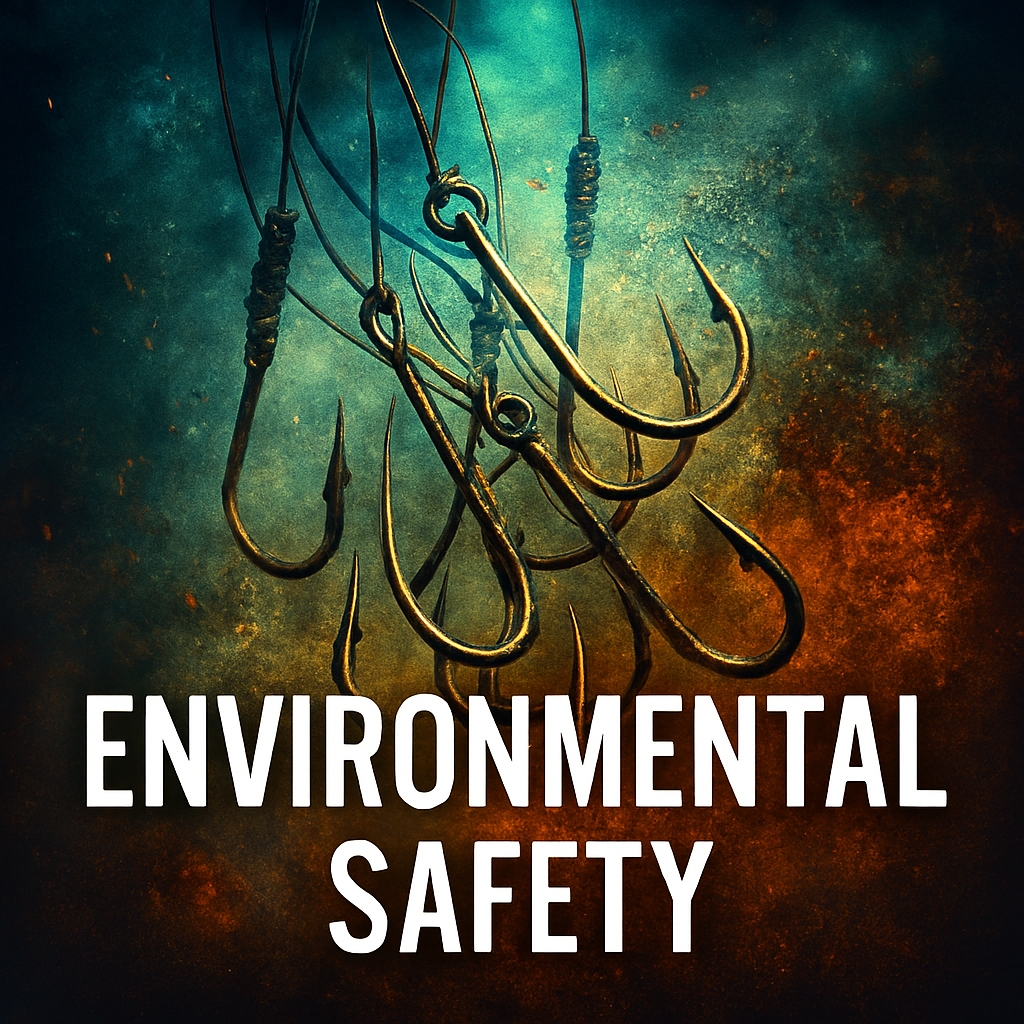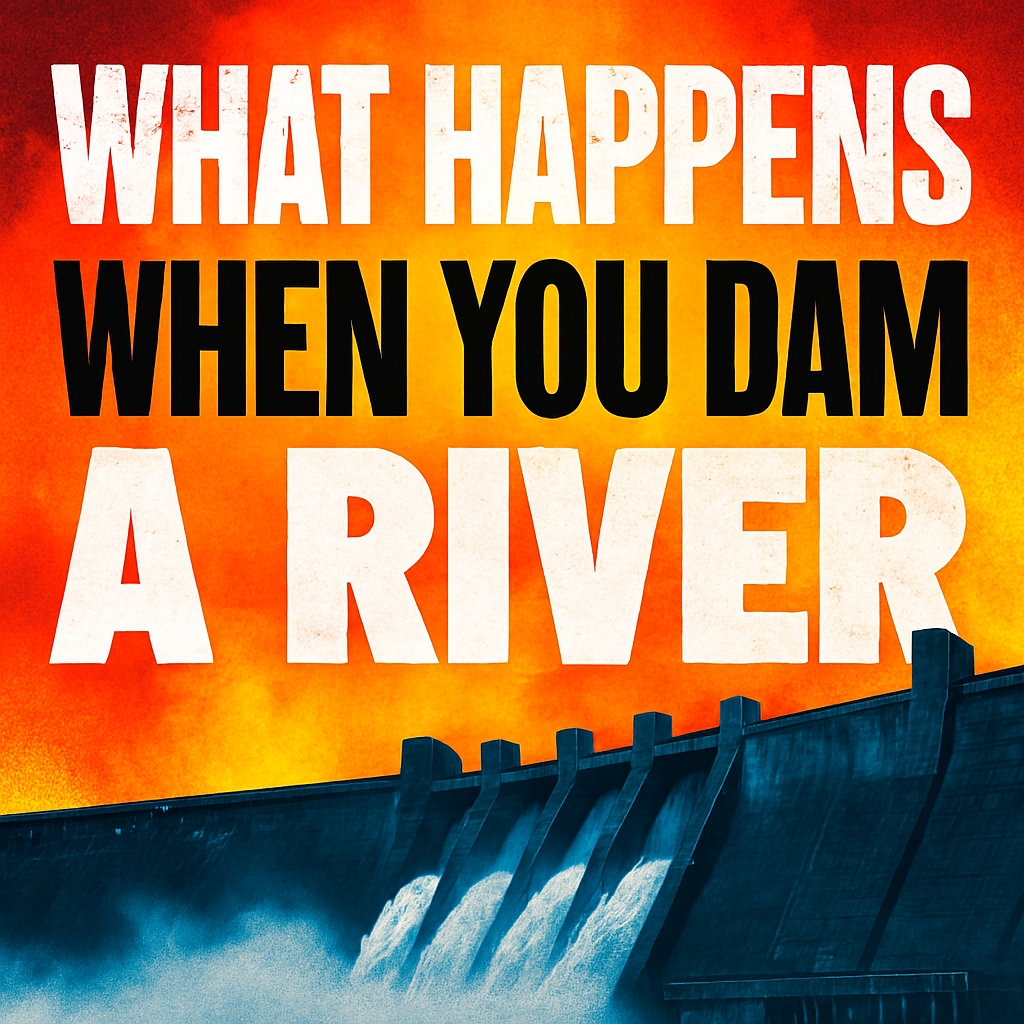The Global Clearwater Challenge
Species That Depend On It – A Planetary Call To Restore Waterways And Reclaim Ecological Memory
The Global Clearwater Challenge is not a competition. It is a planetary invitation to restore the flow of life, memory, and meaning through the world’s waterways. Launched by the EcoReef Project, this challenge asks a simple but urgent question—what can we do in one year to clear our waterways? From mountaintop springs to city drains, every ripple matters. The challenge begins at the source and flows downstream, inviting communities, schools, and cities to participate in a shared act of ecological repair. It is not about purity—it is about participation. It is not about blame—it is about agency. And it is not about isolated action—it is about collective momentum. At the heart of this challenge are the species that depend on clean water to survive. The platypus, a semi-aquatic monotreme native to Australia, is one such species. But it is not alone. Amphibians, aquatic marsupials, wetland birds, and freshwater invertebrates all rely on the integrity of flow. Their survival is tied to the clarity of water, the rhythm of seasons, and the continuity of habitat. When water is polluted, fragmented, or forgotten, these species disappear. And with them, we lose more than biodiversity—we lose cultural memory, ecological function, and symbolic connection. The Global Clearwater Challenge is a call to reverse that loss. It is a movement that begins with a single gesture and builds into a planetary wave. It is about restoring not just water, but meaning. It is about recognizing that water is not just a resource—it is a living archive. And it is about ensuring that animals like the platypus are not just remembered, but protected through action.
Habitat Integrity – Why Flow And Structure Matter To The Global Clearwater Challenge
Ecological Architecture – The Hidden Infrastructure Beneath The Surface
Symbolic Flow – How Water Shapes Memory And Meaning
The Global Clearwater Challenge begins with a recognition: clean water is not enough without structure. For species like the platypus, habitat integrity involves submerged roots, overhanging vegetation, stable banks, and uninterrupted flow. These features are not decorative—they are essential. They provide oxygen, regulate temperature, and support the invertebrate populations that form the base of the food web. When riparian vegetation is cleared, the water warms and oxygen levels drop. When banks erode, burrows collapse and nesting sites vanish. When flow is interrupted by dams or diversions, migration routes are severed and breeding cycles fail. These disruptions are not abstract—they are measurable, visible, and reversible. The Global Clearwater Challenge calls for restoration that is both structural and symbolic. It asks communities to replant, reconnect, and reimagine their waterways. It asks them to see water not just as a utility, but as a story. A story that carries the imprint of human activity and ecological history. A story that can be rewritten through action. The platypus becomes a symbol of what is possible when we restore the broken rhythm. It reminds us that restoration is not just about survival—it is about meaning. The following table outlines key habitat features and their ecological functions for freshwater-dependent species:
| Habitat Feature | Ecological Function | Species Benefited |
|---|---|---|
| Submerged Roots | Shelter, oxygenation, invertebrate habitat | Platypus, Rakali, Water Dragon |
| Overhanging Vegetation | Shade, temperature regulation | Bell Frog, Freshwater Turtles |
| Stable Riverbanks | Nesting sites, erosion control | Platypus, Water Rat |
| Natural Flow Regimes | Migration, breeding, sediment transport | Eel, Frog, Native Fish |
| Clean Substrates | Foraging, egg-laying, burrow construction | Platypus, Crayfish, Macroinvertebrates |
The Global Clearwater Challenge invites every participant to assess, restore, and protect these features. Because when we restore structure, we restore life. And when we restore life, we restore meaning.
Participatory Restoration – How Local Action Builds A Global Wave
Shared Agency – Why Every Gesture Matters
Ecological Citizenship – Reclaiming Responsibility Through Water
The Global Clearwater Challenge is built on the principle of participatory restoration. It recognizes that ecological repair is not the domain of experts alone—it is a shared responsibility. Every community, regardless of size or resources, holds the capacity to restore flow. Whether it’s a student testing pH levels in a schoolyard creek or a mayor funding riparian replanting, each act contributes to a planetary wave. This is not symbolic in the abstract—it is structurally real. Waterways are connected systems. What happens upstream affects everything downstream. A blocked drain in a suburban street can lead to algal blooms in a regional wetland. A cleared bank in a village can restore breeding grounds for migratory frogs. The Global Clearwater Challenge invites participants to map these connections and act within them. It is a framework for ecological citizenship. It asks people to see their local waterway not as a forgotten ditch, but as a living archive. It asks them to restore not just water quality, but ecological meaning. This is restoration as ritual. It is a form of memory work. By cleaning water, we clean history. By restoring flow, we restore identity. The challenge provides tools for tracking progress, sharing wins, and inspiring others. It encourages friendly competition—not to crown the cleanest stream, but to amplify engagement. Schools challenge rival schools. Cities challenge sister cities. Neighborhoods challenge themselves. The result is a distributed network of restoration, each node contributing to a global transformation. The following table outlines key forms of participatory restoration and their ecological impact:
| Restoration Activity | Ecological Impact | Ideal Participants |
|---|---|---|
| Drain Clearing | Reduces urban runoff and blockages | Students, Local Councils, Volunteers |
| Riparian Replanting | Stabilizes banks, cools water, supports fauna | Gardeners, Landcare Groups, Schools |
| Water Testing | Monitors pollution, informs action | Science Classes, Citizen Scientists |
| Wetland Restoration | Rebuilds habitat, filters runoff | Environmental NGOs, Local Governments |
| Storytelling And Mapping | Reclaims cultural memory, builds engagement | Artists, Educators, Community Leaders |
Participatory restoration is not just about physical labor—it is about symbolic labor. It is about reweaving the relationship between people and place. It is about recognizing that water carries more than sediment—it carries story. The Global Clearwater Challenge makes this visible. It turns restoration into a public act of care. It transforms forgotten waterways into sites of meaning. And it reminds us that when we restore together, we restore more than ecology—we restore community.
Amphibian Allies – Why Frogs, Newts, And Tadpoles Signal Ecological Health
Bioindicators – How Amphibians Reflect Water Quality
Vulnerability And Resilience – Lessons From The Edge Of Survival
Amphibians are among the most sensitive indicators of freshwater health. Their permeable skin, aquatic breeding cycles, and reliance on clean substrates make them uniquely vulnerable to pollution, temperature shifts, and habitat fragmentation. Frogs, newts, and tadpoles are often the first to disappear when water quality declines. But they are also among the first to return when restoration succeeds. This dual role—vulnerable and resilient—makes them powerful allies in the Global Clearwater Challenge. Their presence signals ecological integrity. Their absence signals systemic failure. The challenge invites participants to monitor amphibian populations as part of their restoration efforts. It encourages schools to build frog ponds, councils to protect breeding wetlands, and communities to document sightings. These actions are not ornamental—they are diagnostic. They reveal the health of the system. Amphibians also carry cultural weight. They appear in myths, songs, and children’s stories. They symbolize transformation, adaptability, and renewal. Their lifecycle—from egg to tadpole to adult—is a metaphor for restoration itself. The Global Clearwater Challenge embraces this symbolism. It treats amphibians not just as species, but as storytellers. Their return becomes a narrative of success. Their decline becomes a call to action. The following table outlines key amphibian species and their ecological roles:
| Amphibian Species | Ecological Role | Conservation Status (Australia) |
|---|---|---|
| Green And Golden Bell Frog | Bioindicator, predator of mosquito larvae | Vulnerable |
| Southern Corroboree Frog | Alpine wetland specialist | Critically Endangered |
| Eastern Banjo Frog | Soil aeration, invertebrate control | Least Concern |
| Spotted Marsh Frog | Urban wetland colonizer | Least Concern |
| Striped Marsh Frog | Breeding in ephemeral pools | Least Concern |
Amphibians remind us that restoration is not just about infrastructure—it is about life. It is about listening to the quiet signals of ecological change. It is about recognizing that the health of a frog reflects the health of a system. And it is about ensuring that these signals are not ignored, but amplified through action.
Symbolic Ecology – Why Restoration Is Also Cultural Repair
Water As Archive – The Editorial Function Of Flow
Ritual And Memory – Reclaiming Meaning Through Restoration
Water is not just a physical medium—it is a symbolic one. It carries the residue of ritual, industry, and neglect. It encodes histories and exposes values. From sacred springs to concrete culverts, water reveals the fractures in our ecological and cultural systems. The Global Clearwater Challenge treats water as both elemental and editorial. It recognizes that restoration is not just technical—it is narrative. It is about rewriting the story of a place. When a community cleans a stream, it is not just removing debris—it is reclaiming meaning. It is restoring the symbolic function of flow. This matters because ecological degradation is often accompanied by cultural amnesia. Forgotten waterways reflect forgotten relationships. Polluted rivers reflect broken trust. Restoration becomes a form of storytelling. It becomes a way to remember what was lost and imagine what could be. The challenge encourages participants to document their efforts, share their stories, and build symbolic resonance. It invites artists, educators, and elders to contribute. It treats restoration as a cultural act. The following table outlines symbolic restoration activities and their narrative impact:
| Symbolic Activity | Narrative Function | Community Benefit |
|---|---|---|
| Waterway Mapping | Reveals hidden histories | Builds local knowledge and pride |
| Restoration Rituals | Marks ecological milestones | Strengthens community identity |
| Storytelling Workshops | Shares intergenerational memory | Connects youth with elders |
| Public Art Installations | Visualizes ecological change | Inspires engagement and reflection |
| Oral Histories Of Water | Preserves cultural relationships | Anchors restoration in lived experience |
Symbolic ecology is not a distraction from science—it is a complement to it. It deepens engagement. It builds emotional resonance. And it ensures that restoration is not just functional, but meaningful. The Global Clearwater Challenge understands this. It invites participants to restore not just water, but story. Not just flow, but memory. And not just ecology, but culture.
Urban Runoff And Infrastructural Decay – The Hidden Threats Beneath Our Streets
Invisible Systems – How Neglect Becomes Ecological Collapse
Symbolic Neglect – What Broken Infrastructure Reveals About Our Priorities
The Global Clearwater Challenge confronts not only visible pollution, but the hidden systems that shape water quality. Beneath every city lies a network of drains, pipes, culverts, and stormwater channels. These systems were designed to move water efficiently, but over time, they have become conduits of decay. Cracked pipes leak contaminants into groundwater. Blocked drains overflow into creeks. Aging infrastructure fails to filter runoff, allowing oil, heavy metals, and microplastics to enter aquatic habitats. For species like the platypus, these failures are lethal. Polluted runoff reduces oxygen levels, disrupts foraging, and contaminates prey. Amphibians absorb toxins directly through their skin, making them especially vulnerable. Wetland birds lose nesting sites as water levels fluctuate unpredictably. These impacts are not isolated—they are systemic. They reflect a broader neglect of ecological infrastructure. The Global Clearwater Challenge calls attention to this neglect. It invites communities to audit their water systems, identify points of failure, and advocate for repair. It treats infrastructure as ecological architecture. It recognizes that pipes and drains are not just engineering—they are lifelines. When they fail, ecosystems collapse. The challenge encourages local governments to invest in green infrastructure—bioswales, permeable pavements, rain gardens, and constructed wetlands. These interventions filter runoff, slow flow, and restore ecological function. They also carry symbolic weight. A rain garden in a schoolyard is not just a technical fix—it is a statement of care. A restored culvert is not just a channel—it is a gesture of repair. The following table outlines key infrastructural threats and their ecological consequences:
| Infrastructural Threat | Ecological Consequence | Species Impacted |
|---|---|---|
| Cracked Stormwater Pipes | Groundwater contamination, habitat degradation | Platypus, Rakali, Macroinvertebrates |
| Blocked Urban Drains | Flooding, sediment overload | Frogs, Fish, Wetland Birds |
| Unfiltered Runoff | Toxin accumulation, oxygen depletion | Amphibians, Crustaceans, Water Dragons |
| Channelized Waterways | Loss of habitat complexity | Platypus, Native Fish, Eels |
| Impervious Surfaces | Increased flow velocity, erosion | All freshwater-dependent species |
Urban runoff is not just a technical problem—it is a symbolic one. It reflects how we value—or devalue—water. The Global Clearwater Challenge reframes this. It treats every drain as a portal. Every pipe as a story. And every act of repair as a restoration of meaning.
Interconnected Systems – Why Local Waterways Reflect Global Patterns
Watershed Thinking – Seeing The Whole Through The Parts
Planetary Flow – How Local Action Builds Global Resilience
Water does not respect boundaries. It flows across jurisdictions, ecosystems, and cultures. A stream in Sydney may carry pollutants that affect estuarine fish populations kilometers away. A wetland restoration in one suburb may improve bird migration patterns across an entire region. The Global Clearwater Challenge is built on this principle of interconnectedness. It treats every local waterway as part of a planetary system. It invites participants to think in terms of watersheds, not just neighborhoods. This shift is critical. It moves restoration from isolated gestures to systemic change. It encourages collaboration across councils, schools, and community groups. It builds networks of care. Watershed thinking also deepens ecological literacy. It helps people understand how land use, vegetation, and infrastructure affect water quality. It reveals the hidden connections between urban planning and ecological health. The challenge provides tools for mapping these connections. It encourages participants to trace flow from source to sea. To identify points of intervention. To share data and stories. This builds resilience. It creates feedback loops. It amplifies impact. The following table outlines key watershed components and their restoration strategies:
| Watershed Component | Restoration Strategy | Ecological Benefit |
|---|---|---|
| Headwaters | Riparian planting, erosion control | Stabilizes flow, supports biodiversity |
| Midstream Zones | Pollution monitoring, community engagement | Improves water quality, builds awareness |
| Urban Tributaries | Drain clearing, green infrastructure | Reduces runoff, restores habitat |
| Estuarine Interfaces | Wetland restoration, flow regulation | Supports fish nurseries, filters toxins |
| Coastal Outflows | Sediment management, marine buffer zones | Protects reefs, reduces nutrient loading |
Interconnected systems require interconnected action. The Global Clearwater Challenge makes this possible. It turns local gestures into global ripples. It transforms isolated efforts into planetary restoration. And it reminds us that every stream is part of a larger story.

Rakali And River Rats – The Overlooked Engineers Of Freshwater Systems
Ecological Function – How Small Mammals Shape Aquatic Landscapes
Symbolic Presence – Why Visibility Matters In Conservation
The rakali, also known as the native water rat, is one of Australia’s most overlooked freshwater mammals. It is intelligent, adaptable, and ecologically vital. Rakali build burrows, forage for crustaceans, and help regulate invertebrate populations. Their presence indicates healthy water systems. Their absence signals ecological decline. Like the platypus, rakali are vulnerable to pollution, habitat fragmentation, and flow disruption. But unlike the platypus, they are often ignored in conservation discourse. The Global Clearwater Challenge seeks to change this. It elevates species like the rakali as symbols of restoration. It encourages communities to monitor their presence, protect their habitats, and share their stories. Visibility matters. When a species is seen, it is valued. When it is valued, it is protected. Rakali also play a symbolic role. They represent resilience, adaptability, and ecological intelligence. Their ability to thrive in urban waterways makes them ideal ambassadors for restoration. The challenge invites schools to adopt rakali monitoring programs. It encourages councils to include rakali in biodiversity planning. It treats their presence as a measure of success. The following table outlines key ecological roles of rakali and their restoration indicators:
| Ecological Role | Restoration Indicator | Monitoring Strategy |
|---|---|---|
| Burrow Construction | Stable banks, vegetation cover | Visual surveys, bank assessments |
| Crustacean Foraging | Clean substrates, invertebrate abundance | Benthic sampling, prey analysis |
| Urban Adaptation | Flow regulation, pollution control | Camera traps, citizen science reports |
| Nesting Behavior | Riparian integrity, predator control | Habitat mapping, seasonal tracking |
| Social Signaling | Species diversity, ecological balance | Community storytelling, data sharing |
Rakali remind us that restoration is not just about iconic species—it is about ecological function. It is about recognizing the engineers of the system. And it is about ensuring that every species, no matter how overlooked, has a place in the story.
Educational Frameworks – How Schools Become Restoration Hubs
Learning Through Flow – Why Water Is A Curriculum
Youth As Stewards – Building Ecological Literacy From The Ground Up
The Global Clearwater Challenge recognizes schools as restoration engines. They are not just places of instruction—they are sites of transformation. When students engage with water, they engage with ecology, history, and responsibility. A schoolyard creek becomes a living laboratory. A frog pond becomes a site of memory. A drain-clearing project becomes a civic ritual. These experiences build ecological literacy. They teach students that water is not just a science topic—it is a cultural and biological imperative. The challenge provides frameworks for integrating restoration into curricula. It supports water testing modules, habitat mapping exercises, and storytelling workshops. It encourages interdisciplinary learning—where biology meets art, and geography meets ethics. Students learn to read the landscape. They learn to interpret flow. They learn to see water as archive. This builds symbolic intelligence. It deepens engagement. It turns restoration into a rite of passage. Schools also serve as community anchors. When students restore water, families notice. When families notice, neighborhoods change. The ripple effect is real. The challenge amplifies this. It provides tools for tracking progress, sharing stories, and connecting across regions. It encourages friendly competition between schools—not to win, but to inspire. The following table outlines key educational activities and their restoration outcomes:
| Educational Activity | Restoration Outcome | Age Group Targeted |
|---|---|---|
| Water Testing | Pollution awareness, data literacy | Primary, Secondary |
| Frog Pond Construction | Habitat creation, species monitoring | Primary, Secondary |
| Drain Mapping | Urban ecology, infrastructure awareness | Secondary, Tertiary |
| Storytelling And Art | Cultural memory, emotional engagement | All ages |
| Restoration Journals | Reflective practice, symbolic connection | Secondary, Tertiary |
Education is not peripheral to restoration—it is central. It builds the next generation of stewards. It embeds ecological values early. And it ensures that the Global Clearwater Challenge is not just a campaign—it is a curriculum.
Wetland Birds And Flow-Based Nesting – Why Hydrology Shapes Reproduction
Seasonal Rhythm – How Water Levels Dictate Life Cycles
Nesting Integrity – The Fragility Of Floodplain Habitats
Wetland birds are among the most hydrologically sensitive species in freshwater systems. Their nesting, feeding, and migration patterns are tightly linked to seasonal flow. When water levels rise predictably, birds breed successfully. When flow is erratic, nests are flooded or abandoned. Species like the Australasian bittern, black-necked stork, and magpie goose depend on intact wetlands with stable hydrology. These habitats are increasingly rare. Urban expansion, agricultural drainage, and climate disruption have fragmented floodplains and altered flow regimes. The Global Clearwater Challenge addresses this by restoring wetland hydrology. It encourages communities to rehydrate landscapes, remove barriers, and protect nesting zones. It treats water not just as volume, but as rhythm. Restoration becomes a form of timing. It aligns human intervention with ecological cycles. This is critical for wetland birds. Their reproductive success depends on precise conditions—water depth, vegetation density, and predator access. The challenge invites participants to monitor bird populations, document nesting success, and share findings. It builds a database of ecological rhythm. It turns restoration into a seasonal ritual. The following table outlines key wetland bird species and their hydrological needs:
| Wetland Bird Species | Hydrological Requirement | Conservation Status |
|---|---|---|
| Australasian Bittern | Shallow seasonal wetlands, dense reeds | Endangered |
| Black-Necked Stork | Permanent wetlands, open water | Near Threatened |
| Magpie Goose | Floodplain grasslands, predictable inundation | Least Concern |
| Royal Spoonbill | Brackish wetlands, stable water levels | Least Concern |
| Glossy Ibis | Ephemeral wetlands, mudflats | Least Concern |
Wetland birds remind us that restoration is not just spatial—it is temporal. It is about restoring rhythm. It is about aligning flow with life. And it is about ensuring that the Global Clearwater Challenge respects the timing of nature.
Ecological Memory And Cultural Repair – Why Restoration Is A Storytelling Act
Remembering Through Water – How Flow Encodes History
Repairing Through Action – How Restoration Rewrites The Narrative
Water is a carrier of memory. It flows through landscapes, collecting the residue of human activity. It remembers industry, ritual, neglect, and care. When we restore water, we restore memory. We rewrite the story of a place. The Global Clearwater Challenge embraces this narrative dimension. It treats restoration as cultural repair. It invites communities to document their water histories, share their restoration stories, and build symbolic continuity. This is not decorative—it is diagnostic. Cultural amnesia often accompanies ecological degradation. Forgotten waterways reflect forgotten relationships. Restoration becomes a way to remember. It becomes a way to reconnect. The challenge encourages oral histories, public art, and community rituals. It supports storytelling as a restoration tool. This builds emotional resonance. It deepens engagement. It turns ecological data into cultural meaning. The following table outlines key storytelling methods and their restoration functions:
| Storytelling Method | Restoration Function | Community Impact |
|---|---|---|
| Oral Histories | Reclaims lost relationships with water | Builds intergenerational connection |
| Public Art Installations | Visualizes ecological change | Inspires reflection and dialogue |
| Community Rituals | Marks restoration milestones | Strengthens identity and cohesion |
| Restoration Diaries | Tracks emotional and ecological progress | Encourages personal investment |
| Waterway Mapping | Reveals hidden histories | Anchors restoration in place |
Ecological memory is not abstract—it is embodied. It lives in stories, rituals, and relationships. The Global Clearwater Challenge makes this visible. It turns restoration into a narrative act. And it ensures that every stream carries not just water, but meaning.
Flow-Based Storytelling – How Water Teaches Us To Narrate Change
Narrative Ecology – Why Restoration Requires A Language Of Flow
Symbolic Structure – How Water Shapes Editorial Rhythm
Water is not just a substance—it is a storyteller. It moves through landscapes with rhythm, sequence, and transformation. It begins at the source, gathers momentum, and culminates in confluence. This structure mirrors narrative itself. The Global Clearwater Challenge embraces this parallel. It treats restoration as a form of storytelling, where each act of repair becomes a sentence in a larger ecological narrative. Communities are invited to document their restoration journeys—not just through data, but through story. This builds symbolic depth. It turns technical interventions into cultural events. A stream cleared by students becomes a chapter of renewal. A frog pond built by elders becomes a verse of memory. These stories matter. They shape public perception. They build emotional resonance. They create continuity. The challenge encourages participants to use water’s own structure as a guide. To narrate restoration from source to sea. To reflect on beginnings, disruptions, and resolutions. This builds editorial intelligence. It helps communities frame their efforts in ways that inspire others. It also helps them track change. Storytelling becomes a form of monitoring. It reveals patterns, challenges, and successes. The following table outlines narrative structures inspired by water and their restoration applications:
| Narrative Structure | Water Analogy | Restoration Application |
|---|---|---|
| Source And Origin | Headwaters, springs | Initial engagement, community mobilization |
| Disruption And Flow Break | Dams, pollution events | Identifying threats, mapping decay |
| Confluence And Collaboration | Tributary merging, estuarine mixing | Multi-group restoration efforts |
| Rhythm And Seasonality | Flood cycles, breeding seasons | Timed interventions, ecological alignment |
| Culmination And Memory | River mouth, sediment archive | Reflection, storytelling, legacy building |
Flow-based storytelling is not decorative—it is diagnostic. It reveals the health of a system. It shows how restoration unfolds. And it ensures that the Global Clearwater Challenge is not just a technical campaign—it is a narrative movement.
Restoration Metrics – How We Measure Ecological And Symbolic Success
Beyond Data – Why Meaning Matters In Measurement
Ecological Indicators – Tracking The Return Of Life
Restoration must be measured—but not only in numbers. The Global Clearwater Challenge recognizes that success is both ecological and symbolic. It includes water quality metrics, species counts, and flow rates. But it also includes stories, rituals, and emotional engagement. This dual approach builds integrity. It ensures that restoration is not reduced to spreadsheets. It treats data as one layer of meaning. Communities are encouraged to track their progress using both scientific and cultural indicators. This includes pH levels, turbidity, and dissolved oxygen. But it also includes frog calls, rakali sightings, and community participation. These indicators reflect different dimensions of success. One shows chemical balance. The other shows ecological vitality. Together, they build a complete picture. The challenge provides templates for monitoring. It supports citizen science, school-based data collection, and community storytelling. It encourages participants to share their findings publicly. This builds transparency. It fosters accountability. It inspires replication. The following table outlines key restoration metrics and their symbolic interpretations:
| Metric Type | Indicator Example | Symbolic Interpretation |
|---|---|---|
| Water Chemistry | pH, turbidity, dissolved oxygen | Ecological balance, system health |
| Species Presence | Platypus, frogs, rakali, wetland birds | Return of life, habitat integrity |
| Flow Patterns | Seasonal rhythm, velocity, connectivity | Restoration of rhythm, ecological memory |
| Community Engagement | Volunteer hours, school projects | Shared agency, cultural investment |
| Storytelling And Rituals | Documented narratives, public events | Emotional resonance, symbolic repair |
Metrics matter—but meaning matters more. The Global Clearwater Challenge ensures that both are honored. It turns measurement into reflection. And it turns reflection into momentum.
Local-Global Ripple Effects – How Small Acts Scale Planetary Change
Distributed Impact – Why Restoration Is A Network
Symbolic Scale – How Every Stream Connects To The Whole
The Global Clearwater Challenge is designed to scale. It begins with local gestures—clearing a drain, planting reeds, testing water. But it builds toward planetary transformation. This is not metaphorical—it is structural. Waterways are connected systems. What happens in one stream affects the next. What happens in one community inspires another. The challenge leverages this. It creates a distributed network of restoration. Each participant becomes a node. Each act becomes a signal. This builds momentum. It turns isolated efforts into collective movement. It also builds symbolic scale. A frog pond in a schoolyard becomes part of a global archive. A rakali sighting becomes part of a planetary map. The challenge encourages participants to share their work. To document their progress. To challenge others. This creates feedback loops. It amplifies engagement. It builds resilience. The following table outlines local actions and their global ripple effects:
| Local Action | Immediate Impact | Global Ripple Effect |
|---|---|---|
| School Drain Clearing | Reduced urban runoff, student engagement | Model for other schools, regional awareness |
| Wetland Replanting | Habitat restoration, species return | Biodiversity corridor, migratory support |
| Community Water Testing | Pollution data, civic literacy | Shared database, policy influence |
| Storytelling And Mapping | Cultural memory, emotional connection | Global narrative, restoration archive |
| Inter-School Challenges | Friendly competition, increased participation | Network expansion, cross-regional learning |
Ripple effects are not accidental—they are designed. The Global Clearwater Challenge builds them intentionally. It turns local care into global change. And it ensures that every act, no matter how small, contributes to planetary restoration.

Inclusive Access To Clean Water – Why Restoration Must Serve All Species And Communities
Ecological Equity – Ensuring Every Species Has A Right To Flow
Social Integrity – Making Restoration Accessible, Visible, And Shared
Clean water is not a privilege—it is a biological and cultural necessity. The Global Clearwater Challenge is built on the principle of inclusive access. It recognizes that restoration must serve all species and all communities. This includes the platypus, the rakali, the frog, and the child who walks past the creek on the way to school. It includes elders who remember the river’s original rhythm and newcomers who have never seen it clean. It includes species that are visible and those that are overlooked. Restoration must be equitable. It must prioritize habitats that have been neglected, communities that have been excluded, and species that have been forgotten. The challenge invites participants to identify barriers to access—physical, ecological, and symbolic. It encourages councils to remove fences, restore pathways, and build inclusive signage. It asks schools to include all students in restoration activities, regardless of ability or background. It supports multilingual storytelling, sensory engagement, and adaptive design. This builds social integrity. It ensures that restoration is not just technical—it is relational. It connects people to place. It connects species to flow. The following table outlines key access barriers and inclusive restoration strategies:
| Access Barrier | Inclusive Strategy | Beneficiaries |
|---|---|---|
| Physical Inaccessibility | Pathway restoration, wheelchair-friendly design | People with mobility challenges |
| Ecological Fragmentation | Habitat corridors, flow reconnection | Platypus, Rakali, Frogs |
| Cultural Disconnection | Multilingual signage, oral histories | Migrant communities, Indigenous groups |
| Educational Exclusion | Adaptive learning modules, sensory activities | Neurodiverse students, young children |
| Symbolic Invisibility | Public art, storytelling platforms | Overlooked species, marginalized voices |
Inclusive access is not an afterthought—it is foundational. The Global Clearwater Challenge ensures that every stream is open, every story is heard, and every species is protected. It turns restoration into a shared act of care. And it reminds us that clean water must flow for all.
Emotional Resonance In Ecological Design – Why Restoration Must Feel Like Belonging
Symbolic Anchoring – Designing Spaces That Invite Connection
Sensory Intelligence – Engaging The Body As Well As The Mind
Restoration is not just about science—it is about feeling. The Global Clearwater Challenge recognizes that emotional resonance is essential to ecological design. When a waterway feels cared for, people care for it. When a space invites connection, species return. This is not abstract—it is architectural. It involves the placement of stones, the curve of a path, the sound of water. It involves the color of reeds, the texture of bark, the presence of frogs. These elements build symbolic anchoring. They make restoration visible, tangible, and felt. The challenge encourages communities to design restoration sites with emotional intelligence. To consider how a child experiences a stream. How an elder remembers a wetland. How a platypus navigates a bend. This builds sensory engagement. It turns restoration into a multisensory experience. It invites touch, sound, sight, and story. The following table outlines emotional design elements and their ecological and social functions:
| Design Element | Ecological Function | Emotional Function |
|---|---|---|
| Flowing Water Sounds | Oxygenation, species attraction | Calming, memory activation |
| Native Vegetation | Habitat support, erosion control | Familiarity, cultural anchoring |
| Curved Pathways | Reduced runoff, natural movement | Invitation, exploration |
| Public Seating | Observation, rest | Reflection, belonging |
| Interactive Signage | Education, species awareness | Engagement, curiosity |
Emotional resonance is not decorative—it is directive. It shapes behavior. It builds care. And it ensures that the Global Clearwater Challenge is not just seen—it is felt.
Water As Editorial Medium – How Flow Reveals And Repairs Meaning
Elemental Editing – Water As A Revealer Of Systems
Symbolic Restoration – Rewriting The Landscape Through Flow
Water edits the landscape. It carves, reveals, and reshapes. It exposes fractures and binds ecosystems to culture. The Global Clearwater Challenge treats water as an editorial medium. It recognizes that flow is not just physical—it is symbolic. When water is clean, it reveals integrity. When water is polluted, it reveals neglect. Restoration becomes a form of editing. It corrects errors. It restores rhythm. It reclaims meaning. This is not metaphorical—it is structural. A restored stream reveals the health of a system. A reconnected wetland reveals the continuity of culture. The challenge invites participants to read their waterways as texts. To interpret sediment as syntax. To see pollution as a broken sentence. To treat restoration as revision. This builds symbolic intelligence. It turns ecological repair into narrative repair. The following table outlines editorial metaphors and their restoration applications:
| Editorial Metaphor | Water Analogy | Restoration Application |
|---|---|---|
| Sentence Structure | Flow rhythm, seasonal timing | Hydrological alignment, ecological pacing |
| Paragraph Breaks | Tributary junctions, habitat transitions | Habitat zoning, species corridors |
| Margins And Edges | Riparian zones, bank vegetation | Buffer planting, erosion control |
| Footnotes And Archives | Sediment layers, species records | Monitoring, storytelling, memory work |
| Revision And Editing | Pollution removal, flow restoration | Ecological repair, cultural reconnection |
Water is not just a medium—it is a message. The Global Clearwater Challenge ensures that this message is clear, coherent, and restorative. It turns flow into narrative. And it turns restoration into editorial clarity.
Intergenerational Restoration – How Elders And Youth Build Continuity Together
Memory And Momentum – Why Restoration Needs Both Wisdom And Energy
Shared Legacy – Building Ecological Continuity Across Generations
Restoration is not a solo act—it is a relay. The Global Clearwater Challenge recognizes that ecological continuity depends on intergenerational collaboration. Elders carry memory. Youth carry momentum. Together, they build resilience. Elders remember the original rhythm of the river. They recall the frogs that once sang, the platypus that once nested, the wetlands that once breathed. Youth bring curiosity, energy, and innovation. They ask new questions. They build new tools. They imagine new futures. The challenge invites both groups to participate. It encourages storytelling circles, joint restoration projects, and shared monitoring. It treats memory as data. It treats energy as design. This builds continuity. It ensures that restoration is not episodic—it is sustained. Elders teach youth to read the land. Youth teach elders to map it digitally. Elders share rituals. Youth share metrics. The following table outlines intergenerational restoration strategies and their ecological outcomes:
| Restoration Strategy | Intergenerational Role | Ecological Outcome |
|---|---|---|
| Oral History Mapping | Elders share memory, youth document | Cultural continuity, habitat targeting |
| Joint Habitat Restoration | Shared labor, shared learning | Increased biodiversity, community cohesion |
| Seasonal Monitoring Teams | Elders track rhythm, youth log data | Improved timing, adaptive management |
| Ritual And Ceremony | Elders lead, youth participate | Emotional resonance, symbolic anchoring |
| Restoration Legacy Projects | Youth inherit stewardship roles | Long-term care, ecological resilience |
Intergenerational restoration is not just efficient—it is essential. It builds trust. It builds knowledge. And it ensures that the Global Clearwater Challenge becomes a legacy, not just a campaign.
Conclusion – Restoring Flow Is Restoring Meaning
The Global Clearwater Challenge is more than a call to clean water—it is a call to restore memory, meaning, and ecological integrity. It begins with a single gesture and builds into a planetary wave. It invites every community, every school, every species into a shared act of repair. From the platypus to the rakali, from the frog to the child, from the elder to the engineer—this challenge belongs to all. It is not about purity. It is about participation. It is not about guilt. It is about agency. And it is not about isolation. It is about connection. Water is Earth’s living archive. It reveals our values. It encodes our histories. It carries our future. The Global Clearwater Challenge restores that archive. It reclaims flow. It rebuilds structure. It renews story. And it reminds us that when we restore water, we restore ourselves.
Join The Discussion – Share Your Flow, Shape The Future
Whether you’re restoring a creek, building a frog pond, or mapping a forgotten drain—your story matters. #GlobalClearwaterChallenge #EcoReefProject #RestoreFlow #PlatypusProtection #AmphibianAllies #WaterIsMemory #EcologicalRestoration #SymbolicEcology #CleanWaterForAll #IntergenerationalRestoration #FlowIsMeaning #RakaliResilience #WetlandWisdom #NarrativeRepair #PlanetaryChallenge

















The National Pride Psychology Of Modern Societies
[…] reinforcement. Collective rituals amplify emotional resonance. Singing the national anthem at a public event creates a shared emotional experience. This shared emotion strengthens group cohesion and reinforces identity. The intensity of emotional […]